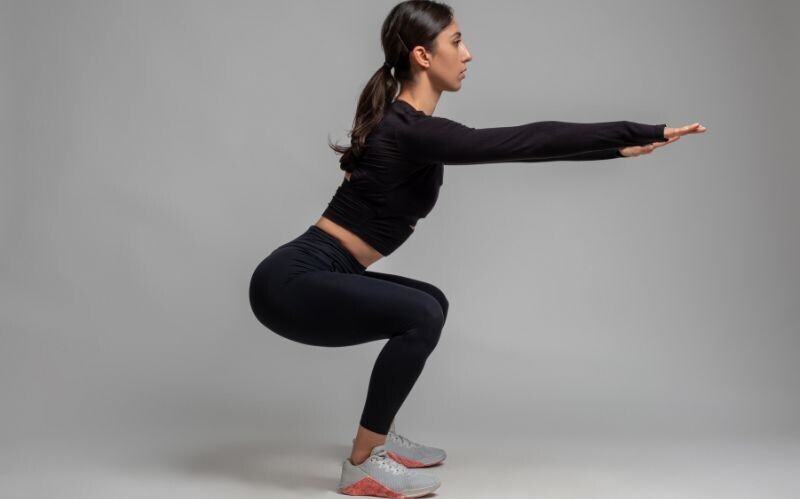Staying active is one of the best things women can do for their overall health. Stay independent with strength training and discover how resistance exercises support your bone health, improves balance, boosts metabolism, and even strengthens your mind.
While walking, swimming, and stretching are excellent choices, strength training often gets overlooked. The benefits of strength training for women go far beyond building muscle—it gives women the energy to enjoy everyday life.
Whether you’re in your 30s or your 60s, no matter your age, adding strength training to your routine can improve your quality of life.
In this article, we’ll explore the many benefits of strength training for women, and how you can safely get started.
Why Strength Training Matters for Women
Strength training (sometimes called resistance training) is any exercise that makes your muscles work against a force. This can include:
- Using hand weights or dumbbells
- Resistance bands
- Weight machines at the gym
- Body weight exercises like squats, lunges, and push-ups
Unlike common myths, strength training won’t make women look “bulky.” Instead, it helps create a toned, strong body and supports better health from the inside out.
Ad
Neoprene Coated Dumbbell Set with Rack
Heavy Resistance Band Set with Door Anchor
This post contains affiliate links. If you click on and purchase through one of those links, you won’t pay a penny more, but we’ll get a small commission, which helps keep our website operating. Thanks! As an Amazon Associate, I earn from qualifying purchases.
Top Benefits of Strength Training for Women
1. Stronger Bones and Joint Protection
As women age, the risk of osteoporosis (weaker, brittle bones) increases. Strength training helps slow bone loss and even builds new bone density. This makes it one of the best ways to protect against fractures and falls. Strong muscles also support your joints, easing stiffness and reducing pain from conditions like arthritis.
2. Improves Balance and Reduces Fall Risk
Falls are a leading cause of injuries in older women. By strengthening the core and leg muscles, strength training improves stability. Better balance means more confidence when walking, climbing stairs, or staying active in daily life.
3. Boosts Metabolism and Supports Weight Control
As we age, metabolism naturally slows down, making it easier to gain weight. Strength training builds lean muscle mass, which burns more calories—even at rest. This makes it easier to manage weight without relying only on strict diets.
4. Enhances Daily Activities
Simple tasks like lifting groceries, gardening, or getting up from a chair become easier when your muscles are strong. Strength training helps maintain independence and energy as you get older.
5. Supports Heart Health
Many women think only cardio helps the heart, but studies show strength training also reduces blood pressure, improves cholesterol, and lowers the risk of heart disease.
6. Improves Mood and Reduces Stress
Strength training isn’t just for the body—it also benefits the mind. Exercise releases endorphins, natural “feel-good” chemicals that can ease stress, boost mood, and reduce symptoms of anxiety and depression.
7. Helps Manage Chronic Conditions
Strength training may improve symptoms of:
- Type 2 diabetes (better blood sugar control)
- Arthritis (less joint pain)
- Obesity (supports weight loss and muscle gain)
- Back pain (strengthens core muscles for support)
Getting Started with Strength Training
If you’re new to strength training, the idea can feel intimidating—but it doesn’t have to be. You can begin safely with just a few minutes a couple of times per week.
Tips for Beginners
- Start small: Use light dumbbells, resistance bands, or even just your body weight.
- Focus on form: Proper technique prevents injury and gives better results.
- Go slow: Begin with 2–3 sessions per week, with rest days in between.
- Progress gradually: Add more resistance as your body gets stronger.
- Warm up and cool down: Gentle stretching before and after workouts keeps muscles flexible.

Simple Exercises for Women
Here are some beginner-friendly moves you can do at home:
- Squats: Strengthen legs and hips.
- Wall push-ups: Work the arms, chest, and shoulders.
- Seated leg lifts: Build core and thigh strength.
- Bicep curls with light weights: Tone and strengthen arms.
- Step-ups: Improve balance and leg strength.
Even just 15–20 minutes can make a difference when done consistently.
Common Myths About Strength Training for Women
Myth 1: Strength training will make me bulky.
Truth: Women have lower testosterone than men, so strength training creates a toned look, not a bulky one.
Myth 2: I’m too old to start.
Truth: It’s never too late. Studies show women in their 70s and 80s gain strength and balance from resistance training.
Myth 3: Only heavy weights work.
Truth: Light weights, bands, or body weight exercises are highly effective, especially when done regularly.
Safety Considerations
Before starting any new workout routine, it’s a good idea to check with your doctor—especially if you have health conditions like heart disease, arthritis, or diabetes. If possible, work with a trainer who can show you proper form.
Listen to your body: a little soreness is normal, but sharp pain is a signal to stop. Always move at your own pace and remember—consistency is more important than intensity.
Stay Independent with Strength Training
As we age, everyday tasks like carrying groceries, climbing stairs, or getting out of a chair can become more difficult.
With stronger muscles and better stability, you’re less likely to fall or need assistance in daily activities. With strength training you maintain and enjoy the freedom, confidence, and vitality that come from a strong, healthy body.
FAQ: Benefits of Strength Training for Women
1-What is the best age for women to start strength training?
It’s never too late to start! Women of all ages, including those in their 60s and beyond, can benefit from strength training. Start with light resistance and focus on consistency.
2-How often should women strength train?
Most experts recommend 2–3 sessions per week. Allow at least one rest day in between sessions to give muscles time to recover and grow stronger.
3-What equipment do I need to start?
You can begin with just your body weight—think squats, push-ups, or step-ups. Resistance bands and light dumbbells are also excellent beginner-friendly tools.
4-Can strength training help with weight loss?
Absolutely. Strength training builds lean muscle, which boosts metabolism and helps the body burn more calories—even at rest—making weight management easier.
Stay Independent with Strength Training
The benefits of strength training for women are too important to ignore. From protecting bone health and improving balance to boosting mood and energy, strength training is one of the best investments you can make in your long-term health. Whether you’re 25 or 65, it’s never too late to begin.
Start small, stay consistent, and enjoy the confidence and vitality that comes with a stronger body and mind.
Disclaimer: If you have any concerns or questions about your health, you should always consult with a physician or other healthcare professional. No content on this site should be substituted for direct medical advice from your doctor or other qualified healthcare practitioner. The information contained here is for informational purposes only. It is from my research and personal experience.
Related Posts
5 Best Strength Training Exercises for Seniors
Find the Workout You’ll Stick With
Busy Moms’ Home Fitness Challenge
How To Make Health and Fitness A Lifestyle

